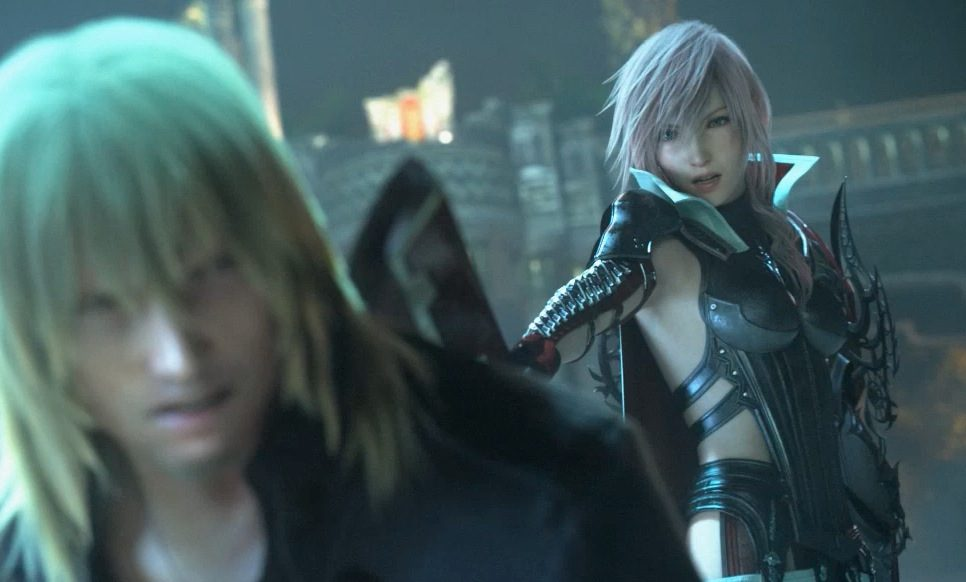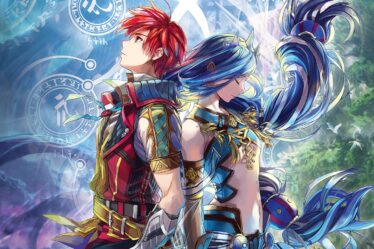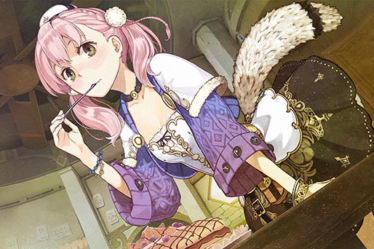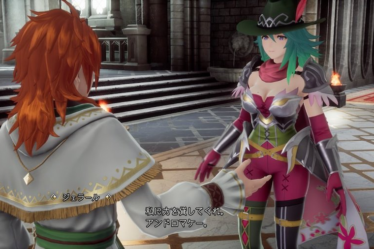
This article was originally published in Italian on Games969.com in 2014.
It was 2009 when Square Enix invited us to step into the shoes of a ragtag group of protagonists with an unprecedented cursed nature. Final Fantasy XIII, with its cast of characters and the troubled nature of its development, divided public opinion and critics alike, becoming a sort of watershed between the old-school RPG roots of the franchise and the new frontier of cinematic RPGs, where much of the development team’s effort and the player’s attention shifted toward the personal stories of individual characters, often at the expense of the broader narrative universe and overworld.
A few years later, in 2011, we were faced with Final Fantasy XIII-2, where the development team made a noticeable effort to remedy the design limitations of the thirteenth installment. However, the gameplay logic behind Serah and Noel’s adventure felt contrived, especially considering the numerous narrative discrepancies between the prologue of this new chapter and the ending of its predecessor.
The impression was that we were dealing with a title that lacked sincerity, a product of commercial strategy designed to sell as many copies as possible by recycling as much as it could from the thirteenth episode in terms of world-building and graphical assets. Imagine our surprise when we reached the conclusion of this iteration of the franchise: an unfinished, unabashedly open-ended cliffhanger so audacious it made the legendary finale of The Sopranos pale in comparison.
Final Fantasy XIII-2 made no attempt at coherence, defending itself behind a more open structure compared to its linear predecessor, yet still plagued by gaps that rendered it more of a transitional chapter leading to what we now know as Final Fantasy XV, which at the time was still Final Fantasy Versus XIII. Lightning Returns was announced shortly after in an online broadcast that has since become legendary, marking the conclusion of one of the most controversial RPG trilogies in recent years—if not the past decade.
Set 500 years after XIII-2’s ending, the game introduces a staggering number of new elements, transforming it into a melting pot of ideas and inspirations that, unfortunately, struggle to resonate with those approaching the title based on the franchise’s legendary reputation.
The world is trapped in a limbo where the concept of “time” has lost all meaning: people no longer bear children and cannot age. Five centuries separate humanity and the animal kingdom from the day chaos spread across the known world. Lightning suddenly awakens from a sorrowful slumber, having cast herself into grief over the loss of her sister and the guilt weighing on her heart. A divine light rouses the mythical heroine, bestowing upon her a new identity: the Savior, the divine instrument of a merciful god who seeks to save the souls of those still alive in a world engulfed by chaos, allowing them to be reborn in a new world of light. Only 13 days remain until the end of the world, and this time, nothing and no one can stop it.
From this premise, the adventure of Lightning and her companions unfolds, though the characters struggle to display any real humanity—perhaps due to their roles or inconsistencies in the writing.
The story of Lightning Returns is built on a paradox that lingers throughout the entire narrative: the protagonist, an ostensibly positive figure but perceived by many as a threat, is tasked with saving souls. Although it initially seems she must end the lives of those she wishes to bring into the new world, this is never clearly established—or rather, it never actually happens.
Lightning’s role is never adequately defined, and characters often react to her in unexpected (or illogical?) ways. Interactions between the protagonist and major supporting characters feel forced by an overtly dramatic intent, relying on a soap-opera-style direction that has characterized Square Enix’s productions in recent years, especially those overseen by Motomu Toriyama.
To fully appreciate Lightning Returns, players must be familiar with all the characters who accompanied Lightning in XIII and XIII-2, as the major events revolve around them and rely heavily on an emotional connection between them and the player. Without prior knowledge of these characters, the emotional weight of the story is greatly diminished.
Fortunately, the side stories found in the various side quests scattered throughout the game’s expansive environments are much more engaging and entertaining—not that we expected anything different from a saga where the most iconic entry required the protagonist to embrace drag culture just to progress.
Ultimately, the story feels contrived, with unoriginal twists and little overall appeal unless one is particularly attached to the previous games’ characters, who parade through endless cinematic scenes in a final reunion-style sendoff, hoping to cement their place in the franchise’s history and the hearts of fans.
Not that this is likely—especially on a third attempt at redemption.
Lightning Returns introduces gameplay mechanics that feel entirely foreign to the main series, which likely explains why the developers decided to break from the traditional naming conventions to distance it from the core franchise. Considered an Action RPG, Lightning’s adventure—brought to life by Tetsuya Nomura’s distinctive artistic style—establishes its purpose from the outset, narrated through stunning FMVs and lackluster in-game cinematic sequences. Players explore four large areas, completing main objectives tied to key characters from Final Fantasy XIII and numerous side quests that grant stat bonuses and improve Lightning’s combat effectiveness.
Unlike the original game, with the exception of some mandatory paths, players have complete freedom to manage events, tackling missions in their preferred order—though they are constantly under the looming pressure of the world’s impending end. Reminiscent of The Legend of Zelda: Majora’s Mask—though failing to capture its atmosphere—Lightning Returns employs a time-based mechanic that prevents players from aimlessly wandering through the vast yet barren environments. However, the time constraint is not overly intrusive. Past RPGs have implemented similar mechanics that turned playthroughs into frantic races against the clock, such as the Atelier series and Atelier Rorona in particular, but here, the countdown is rarely frustrating or limiting, especially since, with the right strategies, most of the game can be completed within the first six or seven days—despite having thirteen available—and various abilities exist to slow time using points earned in battles.
The large environments allow for jumping and climbing, but platforming elements feel uninspired, often constrained by bizarre level design choices. Why Lightning can only grab onto surfaces marked with red edges is a mystery that Square Enix may take to the grave.
Character progression is tied to stat bonuses earned through relatively monotonous side missions, though these do provide amusing diversions that lighten the narrative’s tone with humorous moments, reminiscent of a time when Final Fantasy characters didn’t take themselves too seriously.
Unlike previous games, there is no way to influence character growth beyond altering abilities, attacks, and equipment. The new strategic system, combining XIII‘s Optima system with Final Fantasy V’s Job system, allows Lightning to change outfits for different stat bonuses and attacks. While this mechanic adds depth to combat, the outfits themselves clash with the game’s dramatic tone. Many costumes seem to exist solely to showcase generous amounts of skin, and combined with the sheer number of accessories available, it suggests an inconsistent approach from the developers regarding the narrative’s intended atmosphere.
The battle system introduces real-time combat, rewarding reflexes, precise timing, and tactical outfit changes. The goal is to stagger enemies through specific attack patterns, much like in XIII, though battles sometimes feel overly chaotic, with excessive visual effects obscuring important cues.
Overall, the game feels like it would have benefited from being entirely separate from Final Fantasy XIII. This sentiment is strongest when one considers how much more enjoyable it would be to focus on side stories, exploration, and combat rather than sitting through countless cinematic sequences starring an overly cold protagonist and her companions—who, after five centuries, still haven’t changed their outfits.
At around thirty hours, it’s the shortest game in the trilogy, culminating in a truly conclusive ending. A post-game exists, though it adds little to overall longevity.
On a technical level, the game’s vast environments take a toll, with criticisms directed at environmental textures, polygonal models, frame rate stability, and overall graphical fidelity. While cinematic sequences showcase Square Enix’s artistic talent, the in-game visuals leave much to be desired.
Thankfully, Lightning Returns boasts a strong soundtrack, enriched by contributions from various artists over the years. The English voice acting is solid, and for the first time in the franchise, an original Japanese dub was included as a free DLC for early adopters, later available for €3.99—long-requested by fans.
Lightning Returns attempts to conclude one of the most divisive RPG trilogies with bold gameplay changes and an open structure. While the combat system is engaging and offers strategic depth, the narrative feels convoluted, and the emotional weight of its predecessors is often lost. The world design lacks cohesion, and technical limitations hinder immersion. Despite a solid soundtrack and some enjoyable side content, the game struggles to justify its existence beyond being a commercial follow-up. A mixed bag that might appeal to die-hard fans but fails to truly redeem the XIII saga. Ultimately, Lightning Returns closes an already divisive trilogy with equal ambiguity.


